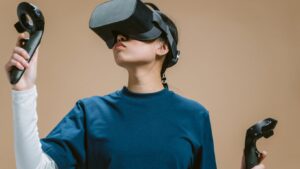Exciting advancements in technology have revolutionized the way we interact with the digital world, particularly through the creation of face-based Augmented Reality (AR) experiences. As an AR enthusiast, I’ve delved into the immersive realm of blending virtual elements with our physical environment using facial recognition technology.
Creating Face-Based AR Experiences

Face-Based AR, short for Face-Based Augmented Reality, leverages facial recognition technology to overlay virtual elements onto a user’s face in real-time. It enables the integration of digital content, such as animations, filters, or effects, onto the user’s facial features, enhancing interactive experiences. These AR applications use the unique characteristics of a person’s face, such as facial expressions, movements, and features, to create engaging and personalized interactions.
Key Technologies Behind Face-Based AR
The implementation of Face-Based AR relies on sophisticated technologies to recognize and track facial features accurately. One key technology is Facial Detection, which identifies the presence of a face within an image or video stream. It analyzes the geometric patterns of the face, such as the distance between eyes, nose, and mouth, to locate and track the face in real-time. Additionally, Facial Recognition technology maps distinctive facial features to create a unique facial ID, enabling personalized AR experiences tailored to individual users.
By combining these technologies, Face-Based AR experiences can deliver immersive and interactive applications that react to users’ facial movements, gestures, and expressions, opening up a new realm of possibilities for engaging digital interactions.
Design Considerations for Face-Based AR Experiences
Ethics and Privacy Concerns

When creating face-based AR experiences, it’s crucial to address ethics and privacy concerns to ensure user trust and data security. I prioritize user consent and transparent data practices in my designs. Respecting privacy boundaries is paramount, and I implement robust data protection measures to safeguard user information.
User Interface and Experience
In creating face-based AR experiences, focusing on user interface (UI) and experience (UX) is key to enhancing user engagement. I optimize UI elements for intuitive interactions, ensuring a seamless AR experience. By prioritizing UX design principles, such as simplicity and accessibility, I aim to deliver immersive and user-friendly face-based AR applications.
Real-World Applications of Face-Based AR
Entertainment and Gaming
In the realm of entertainment and gaming, face-based AR experiences revolutionize user engagement by offering interactive and personalized features. Developers can create immersive games where users’ facial expressions control characters or trigger in-game events. For instance, AR filters in gaming apps can transform users’ faces into animated avatars, enhancing the overall gaming experience by integrating real-world expressions into virtual environments. This blend of physical and digital interactions elevates entertainment to new levels, making gaming more exciting and captivating.
Education and Training
The application of face-based AR in education and training opens up avenues for interactive and enriching learning experiences. Educational institutions can utilize AR technology to provide hands-on learning opportunities through virtual simulations and interactive lessons. For example, language learning apps can use facial recognition to assess pronunciation accuracy, providing instant feedback to users.
Predictions for Future Developments

Looking ahead, the future of face-based AR holds exciting possibilities for innovation and growth. One key trend is the integration of advanced biometric recognition technologies to enhance facial tracking and authentication in AR applications. This can lead to more secure and personalized user experiences.
Furthermore, the combination of augmented reality with artificial intelligence is expected to revolutionize face-based AR interactions. AI algorithms can analyze facial expressions, gestures, and emotions to enable more intelligent and responsive virtual interactions. This integration could pave the way for highly immersive and adaptive AR experiences that cater to individual user preferences.
Overcoming technical challenges and embracing future trends in face-based AR development will drive the evolution of AR experiences towards greater interactivity and personalization. As technologies continue to advance, we can expect to see even more innovative applications that push the boundaries of what is possible in the realm of face-based AR.

